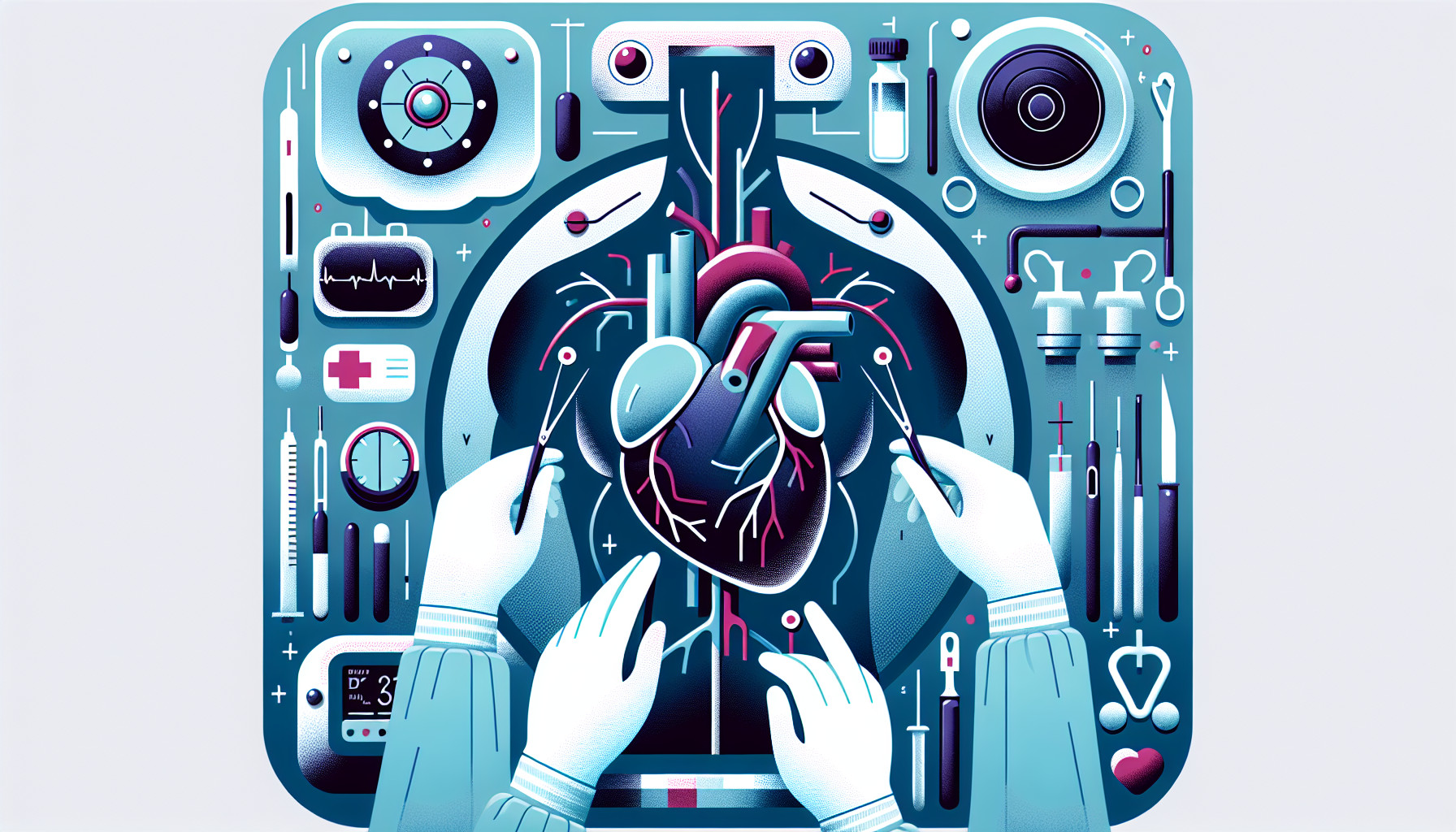Our Summary
This research paper compares two common techniques used in heart bypass surgery: endoscopic vein harvesting (EVH) and open vein harvesting (OVH). The researchers looked at the outcomes of these techniques over a minimum of one year. They found that the rates of death, in-hospital death, and major adverse cardiac events were similar between the two methods. However, EVH was linked to more injuries to the graft (the vein used in the bypass) and lower success rates in the mid to long-term. But, EVH was also associated with fewer complications at the site where the vein was taken from. The study suggests that, with more experience and practice, the outcomes of EVH could improve over time.
FAQs
- What are the two common techniques used in heart bypass surgery that the research paper compares?
- How do the rates of death and major adverse cardiac events compare between endoscopic vein harvesting (EVH) and open vein harvesting (OVH)?
- What are the potential advantages and disadvantages of endoscopic vein harvesting (EVH) compared to open vein harvesting (OVH) according to the research?
Doctor’s Tip
A doctor may advise a patient undergoing coronary artery bypass surgery to discuss with their surgeon the pros and cons of endoscopic vein harvesting versus open vein harvesting. They should also ask about the surgeon’s experience with each technique and inquire about the potential risks and benefits specific to their individual case. It’s important for the patient to be informed and actively involved in the decision-making process to ensure the best possible outcome.
Suitable For
Patients who are typically recommended for coronary artery bypass surgery include those with severe coronary artery disease, significant blockages in multiple coronary arteries, unstable angina, heart failure, or those who have not responded well to other treatments such as medication or angioplasty. Additionally, patients who have had a previous heart attack or have diabetes may also be candidates for coronary artery bypass surgery.
Timeline
Before coronary artery bypass surgery:
- Patient undergoes diagnostic tests such as angiography and stress tests to determine the extent of blockage in the coronary arteries.
- Patient may undergo medical treatment or lifestyle changes to manage symptoms and improve heart function.
- Surgery is scheduled and patient is briefed on the procedure, risks, and recovery process.
During coronary artery bypass surgery:
- Patient is put under general anesthesia.
- Surgeon makes an incision in the chest to access the heart.
- Healthy blood vessel (usually from the leg or chest) is harvested to create a bypass around the blocked artery.
- Bypass is connected to the coronary artery to restore blood flow to the heart.
- Surgery typically takes several hours.
After coronary artery bypass surgery:
- Patient is monitored in the ICU before being transferred to a regular hospital room.
- Patient may experience pain, fatigue, and discomfort in the chest and legs.
- Physical therapy and breathing exercises are initiated to aid in recovery.
- Patient is discharged from the hospital within a week or two.
- Follow-up appointments are scheduled to monitor recovery and assess the effectiveness of the surgery.
What to Ask Your Doctor
- What are the potential risks and benefits of coronary artery bypass surgery?
- How long is the recovery process after surgery and what can I expect during this time?
- What lifestyle changes should I make after surgery to improve my heart health?
- How often will I need follow-up appointments and monitoring after surgery?
- What are the success rates of endoscopic vein harvesting compared to open vein harvesting in the long-term?
- Are there any specific factors that may make me a better candidate for one technique over the other?
- What are the potential complications associated with each technique and how are they typically managed?
- How experienced are you and your team with performing endoscopic vein harvesting compared to open vein harvesting?
- Are there any alternative treatment options to consider before undergoing coronary artery bypass surgery?
- How can I best prepare for surgery, both physically and emotionally?
Reference
Authors: Li G, Zhang Y, Wu Z, Liu Z, Zheng J. Journal: Int J Surg. 2019 Dec;72:167-173. doi: 10.1016/j.ijsu.2019.11.003. Epub 2019 Nov 9. PMID: 31707009
